The Press Room highlights computational astronomy work around the UC-HiPACC consortium; the wording of the short summaries on this page is based on wording in the individual releases or on the summaries on the press release page of the original source. Press releases below appear in reverse chronological order (most recent first); they can also be displayed by UC campus or DOE lab by clicking on the desired venue at the bottom of the left-hand column.
20 February 2014 — In Memoriam: Arthur M. Wolfe 1939-2014
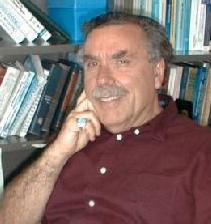
Arthur M. Wolfe
Read full UCSD press release
May 31, 2013 — Trillion Particle Simulation on Hopper Honored with Best Paper
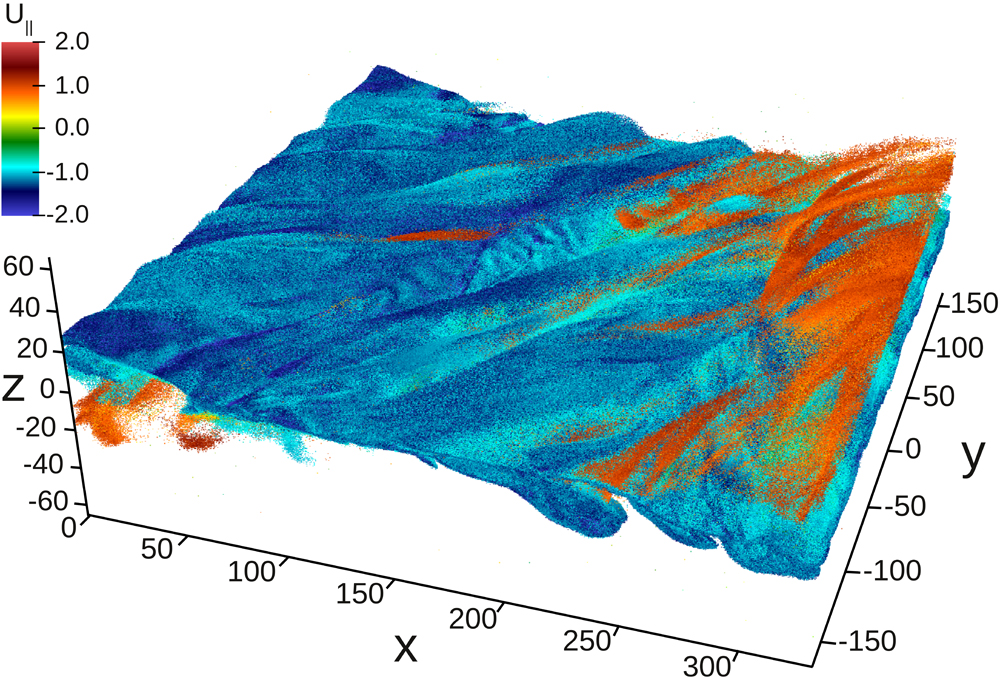
view full NERSC Press Release
December 17, 2012 — New Survey of Distant Galaxies Will Trace Changes Over Billions of Years
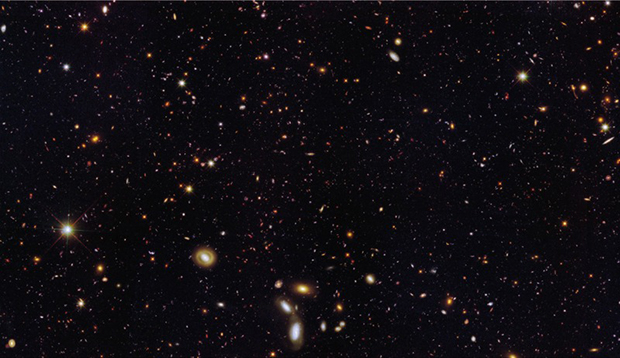
Optical images captured by the Hubble Space Telescope of distant galaxies in one of the first fields to be measured by the new collaboration. The new measurements will reveal details of the galaxies’ gases, stars and black holes. Credit: NASA/CANDELS.
Astronomers will begin an ambitious new project to measure light from thousands of distant galaxies this weekend. Over the next four years, they will spend 47 nights surveying the sky for signals from a time when the Universe was just 2 to 4 billion years old and the earliest galaxies were forming.
“In the last 10 years or so we have obtained very large samples of nearby galaxies that reveal enormous amounts of information about the stellar, gas and dust content,” said Alison Coil, an astrophysicist at the University of California, San Diego’s Center for Astrophysics and Space Sciences and one of the leaders of the project. “For these very distant galaxies we have images, especially from the Hubble Space Telescope, but we have far less information about the details of the stars, gas, dust, and black holes in them.”
view full UCSD Press Release
October 17, 2012 — Massive Planetary Collision May Have Zapped Key Elements from Moon
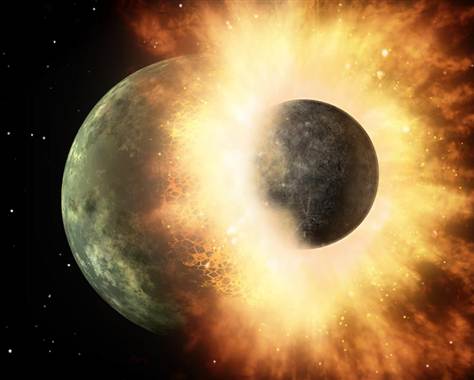
A celestial body about the size of the moon slams into a planetary body the size of Mercury in this artist's conception. Credit: NASA/JPL-Caltech
Fresh examinations of lunar rocks gathered by Apollo mission astronauts have yielded new insights about the moon’s chemical makeup as well as clues about the giant impacts that may have shaped the early beginnings of Earth and the moon.
Geochemist James Day of Scripps Institution of Oceanography at UC San Diego and colleagues Randal Paniello and Frédéric Moynier at Washington University in St. Louis used advanced technological instrumentation to probe the chemical signatures of moon rocks obtained during four lunar missions and meteorites collected from the Antarctic. The data revealed new findings about elements known as volatiles, which offer key information about how planets may have formed and evolved.
view full UCSD Press Release
September 24, 2012 — UC San Diego Astrophysicist Wins Hans Bethe Prize
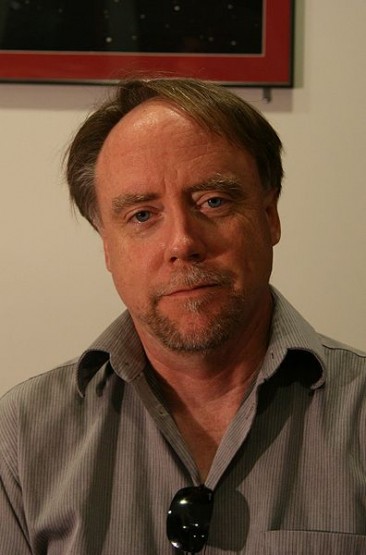
George Fuller Credit: CASS, UC San Diego
George Fuller, an astrophysicist and professor of physics who directs UC San Diego’s Center for Astrophysics and Space Sciences, known as CASS, has been selected to receive the 2013 Hans A. Bethe Prize.
The prestigious award is given annually by the American Physical Society to” recognize outstanding work in theory, experiment or observation in the areas of astrophysics, nuclear physics, nuclear astrophysics, or closely related fields.” The prize, which was established to honor Bethe, a renowned nuclear physicist at Cornell University, consists of $10,000 and a certificate citing the contributions made by the recipient.
Fuller was cited for “outstanding contributions to nuclear astrophysics, especially his seminal work on weak interaction rates for stellar evolution and collapse and his pioneering research on neutrino flavor-mixing in supernovae.” He will formally receive his award at a special session of the society’s April 2013 meeting in Denver...
view full UCSD Press Release
September 4, 2012 — Halo of Neutrinos Alters Physics of Exploding Stars
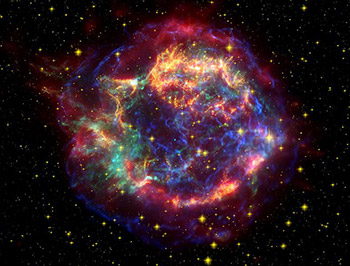
Remnants of the collapsed supernova Cassiopeia A. Credit: NASA/JPL-Caltech
Sparse halos of neutrinos within the hearts of exploding stars exert a previously unrecognized influence on the physics of the explosion and may alter which elements can be forged by these violent events.
John Cherry, a graduate student at UC San Diego, models stellar explosions, including a type called a core-collapse supernova. As these stars run out of fuel, their cores suddenly collapse to form a neutron star, which quickly rebounds sending seas of neutrinos through the surrounding stellar envelope and out into space.
Even as the collapsed core is rebounding, the rest of the star is still falling inward. Plumes of matter sink, accreting onto the core. “This matter is actually causing some small fraction of neutrinos to bounce at wide angles and cross the trajectories of neutrinos coming from the core,” Cherry said.
August 21, 2012 — Intense Bursts of Star Formation Drive Fierce Galactic Winds
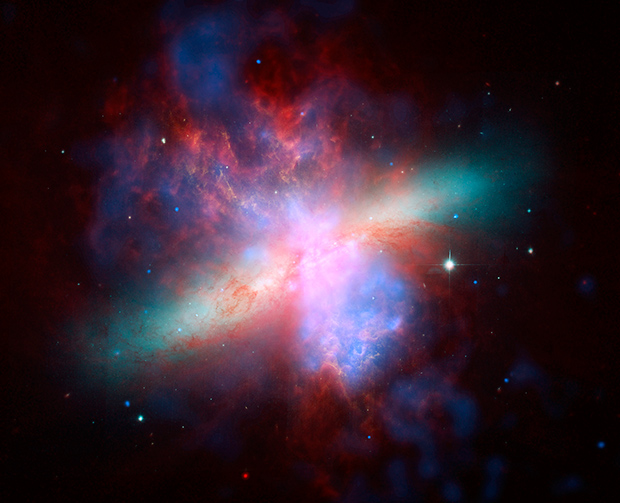
Matter blasts out of the starburst galaxy M82 in this composite image from three observatories. Credit: Smithsonian Institution/Chandra X-ray Observatory
"Fierce galactic winds powered by an intense burst of star formation may blow gas right out of massive galaxies, shutting down their ability to make new stars.
Sifting through images and data from three telescopes, a team of astronomers found 29 objects with outflowing winds measuring up to 2,500 kilometers per second, an order of magnitude faster than most observed galactic winds.
“They’re nearly blowing themselves apart,” said Aleksandar Diamond-Stanic, a fellow at the University of California’s Southern California Center for Galaxy Evolution, who led the study. “Most galactic winds are more like fountains; the outflowing gas will fall back onto the galaxies. With the high-velocity winds we’ve observed the outflowing gas will escape the galaxy and never return.” Diamond-Stanic and colleagues published their findings in Astrophysical Journal Letters..."
read full UCSD Press Release
March 5, 2012 — SDSC’s ‘Gordon’ Supercomputer: Ready for Researchers
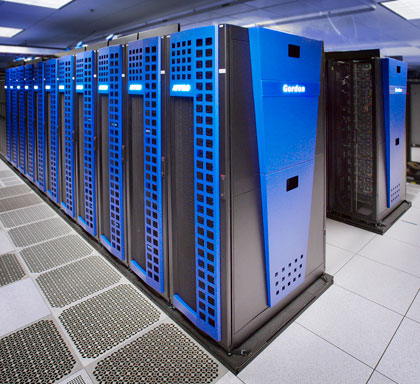
SDSC's Gordon Supercomputer. Photo: Alan Decker.
Following acceptance testing in January, Gordon has now begun serving University of California and national academic researchers as well as industry and government agencies. Named for its massive amounts of flash-based memory, Gordon is part of the National Science Foundation’s (NSF) Extreme Science and Engineering Discovery Environment, or XSEDE program, a nationwide partnership comprising 16 supercomputers and high-end visualization and data analysis resources...
view SDSC Press Release
March 1, 2012 — SDSC, UC-HiPACC to Host Summer School on Astroinformatics SDSC's 'Gordon' Supercomputer to be used for Astronomical Data Studies; Applications due this month (March)
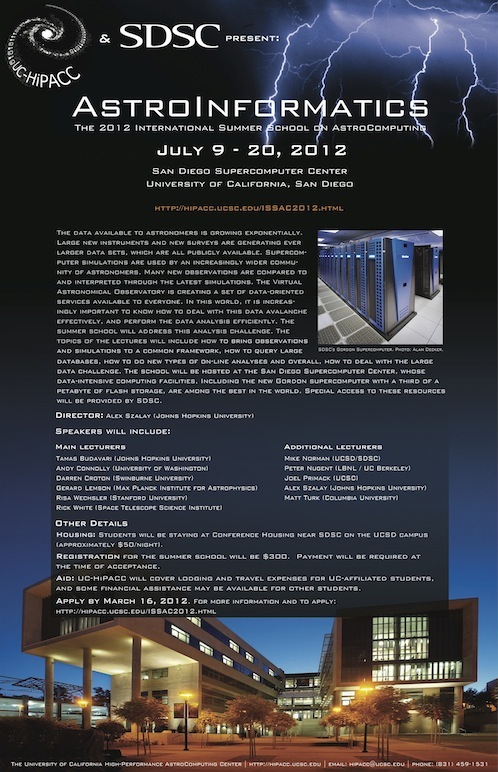
View the SDSC Press Release
View the Summer School website